Pharmacology > AQA Questions and Marking Scheme > HESI Pharmacology Latest Versions Verified Questions and Answers 2022 A+ (All)
HESI Pharmacology Latest Versions Verified Questions and Answers 2022 A+
Document Content and Description Below
HESI Pharmacology 21 Latest Versions Verified Questions and Answers Best Document for Exam Preparation 100 % Satisfaction Guaranteed Here for you Complete and Latest Guide For H... ESI Pharmacology Exam 2022 HESI Pharmacology 1 . A healthcare provider prescribes cephalexin monohydrate (Keflex) for a client with a postoperative infection. It is most important for the nurse to assess for what additional drug allergy before administering this prescription? A) Penicillins. B) Aminoglycosides. C) Erythromycins. D) Sulfonamides. A) Penicillins. Cross-allergies exist between penicillins (A) and cephalosporins, such as cephalexin monohydrate (Keflex), so checking for penicillin allergy is a wise precaution before administering this drug. 2. Which nursing intervention is most important when caring for a client receiving the antimetabolite cytosine arabinoside (Arc-C) for chemotherapy? A) Hydrate the client with IV fluids before and after infusion. B) Assess the client for numbness and tingling of extremities. C) Inspect the client's oral mucosa for ulcerations. D) Monitor the client's urine pH for increased acidity. C) Inspect the client's oral mucosa for ulcerations. Cytosine arabinoside (Arc-C) affects the rapidly growing cells of the body, therefore stomatitis and mucosal ulcerations are key signs of antimetabolite toxicity (C). (A, B, and D) are not typical interventions associated with the administration of antimetabolites. 3. When assessing an adolescent who recently overdosed on acetaminophen (Tylenol), it is most important for the nurse to assess for pain in which area of the body? A) Flank. B) Abdomen. C) Chest. D) Head. B) Abdomen. Acetaminophen toxicity can result in liver damage; therefore, it is especially important for the nurse to assess for pain in the right upper quadrant of the abdomen (B), which might indicate liver damage. (A, C, and D) are not areas where pain would be anticipated. 4. An adult client is given a prescription for a scopolamine patch (Transderm Scop) to prevent motion sickness while on a cruise. Which information should the nurse provide to the client? A) Apply the patch at least 4 hours prior to departure. B) Change the patch every other day while on the cruise. C) Place the patch on a hairless area at the base of the skull. D) Drink no more than 2 alcoholic drinks during the cruise. A) Apply the patch at least 4 hours prior to departure. Scopolamine, an anticholinergic agent, is used to prevent motion sickness and has a peak onset in 6 hours, so the client should be instructed to apply the patch at least 4 hours before departure (A) on the cruise ship. The duration of the transdermal patch is 72 hours, so (B) is not needed. Scolopamine blocks muscarinic receptors in the inner ear and to the vomiting center, so the best application site of the patch is behind the ear, not at the base of the skull (C). Anticholinergic medications are CNS depressants, so the client should be instructed to avoid alcohol (D) while using the patch. 5. The nurse is reviewing the use of the patient-controlled analgesia (PCA) pump with a client in the immediate postoperative period. The client will receive morphine 1 mg IV per hour basal rate with 1 mg IV every 15 minutes per PCA to total 5 mg IV maximally per hour. What assessment has the highest priority before initiating the PCA pump? A) The expiration date on the morphine syringe in the pump. B) The rate and depth of the client's respirations. C) The type of anesthesia used during the surgical procedure. D) The client's subjective and objective signs of pain. B) The rate and depth of the client's respirations. A life-threatening side effect of intravenous administration of morphine sulfate, an opiate narcotic, is respiratory depression (B). The PCA pump should be stopped and the healthcare provider notified if the client's respiratory rate falls below 12 breaths per minute, and the nurse should anticipate adjustments in the client's dosage before the PCA pump is restarted. (A, C, and D) provide helpful information, but are not as high a priority as the assessment described in (B). 6. A medication that is classified as a beta-1 agonist is most commonly prescribed for a client with which condition? A) Glaucoma. B) Hypertension. C) Heart failure. D) Asthma. C) Heart failure. Beta-1 agonists improve cardiac output by increasing the heart rate and blood pressure and are indicated in heart failure (C), shock, atrioventricular block dysrhythmias, and cardiac arrest. Glaucoma (A) is managed using adrenergic agents and beta-adrenergic blocking agents. Beta-1 blocking agents are used in the management of hypertension (B). Medications that stimulate beta-2 receptors in the bronchi are effective for bronchoconstriction in respiratory disorders, such as asthma (D). 7. A female client with rheumatoid arthritis take ibuprofen (Motrin) 600 mg PO 4 times a day. To prevent gastrointestinal bleeding, misoprostol (Cytotec) 100 mcg PO is prescribed. Which information is most important for the nurse to include in client teaching? A) Use contraception during intercourse. B) Ensure the Cytotec is taken on an empty stomach. C) Encourage oral fluid intake to prevent constipation. D) Take Cytotec 30 minutes prior to Motrin. A) Use contraception during intercourse. Cytotec, a synthetic form of a prostaglandin, is classified as pregnancy Category X and can act as an abortifacient, so the client should be instructed to use contraception during intercourse (A) to prevent loss of an early pregnancy. (B) is not necessary. A common side effect of Cytotec is diarrhea, so constipation prevention strategies are usually not needed (C). Cytotec and Motrin should be taken together (D) to provide protective properties against gastrointestinal bleeding. 8. A client with heart failure is prescribed spironolactone (Aldactone). Which information is most important for the nurse to provide to the client about diet modifications? A) Do not add salt to foods during preparation. B) Refrain for eating foods high in potassium. C) Restrict fluid intake to 1000 ml per day. D) Increase intake of milk and milk products. B) Refrain for eating foods high in potassium. Spironolactone (Aldactone), an aldosterone antagonist, is a potassium-sparing diuretic, so a diet high in potassium should be avoided (B), including potassium salt substitutes, which can lead to hyperkalemia. Although (A) is a common diet modification in heart failure, the risk of hyperkalemia is more important with Aldactone. Restriction of fluids (C) or increasing milk and milk products (D) are not indicated with this prescription. 9. In evaluating the effects of lactulose (Cephulac), which outcome should indicate that the drug is performing as intended? A) An increase in urine output. B) Two or three soft stools per day. C) Watery, diarrhea stools. D) Increased serum bilirubin. B) Two or three soft stools per day. Lactulose is administered to reduce blood ammonia by excretion of ammonia through the stool. Two to three stools a day indicate that lactulose is performing as intended (B). (A) would be expected if the patient received a diuretic. (C) would indicate an overdose of lactulose and is not expected. Lactulose does not affect (D). 10. The healthcare provider prescribes naproxen (Naproxen) twice daily for a client with osteoarthritis of the hands. The client tells the nurse that the drug does not seem to be effective after three weeks. Which is the best response for the nurse to provide? A) The frequency of the dosing is necessary to increase the effectiveness. B) Therapeutic blood levels of this drug are reached in 4 to 6 weeks. C) Another type of nonsteroidal antiinflammatory drug may be indicated. D) Systemic corticosteroids are the next drugs of choice for pain relief. C) Another type of nonsteroidal antiinflammatory drug may be indicated. Individual responses to nonsteroidal antiinflammatory drugs are variable, so (C) is the best response. Naproxen is usually prescribed every 8 hours, so (A) is not indicated. The peak for naproxen is one to two hours, not (B). Corticosteroids are not indicated for osteoarthritis (D). [Show More]
Last updated: 1 year ago
Preview 1 out of 781 pages
Instant download
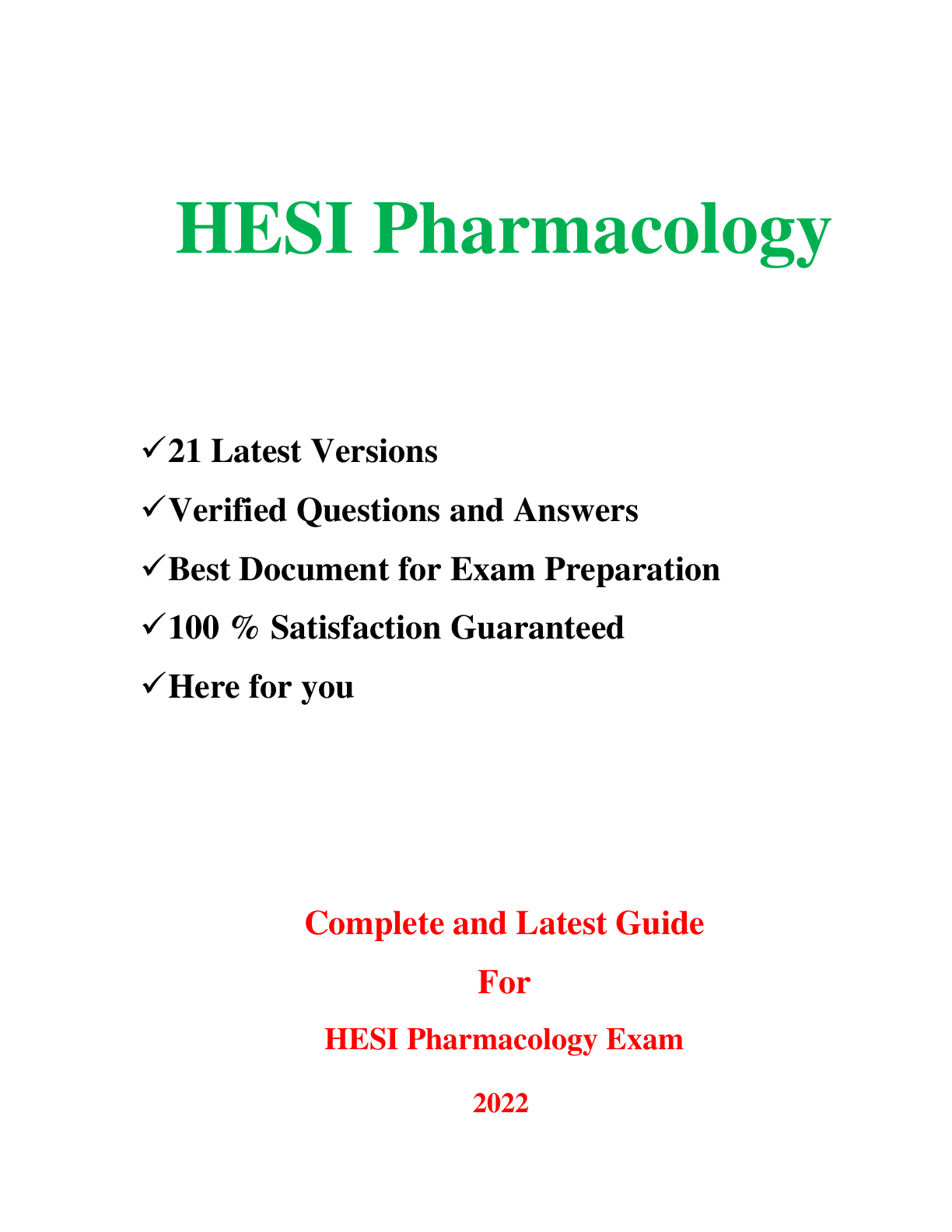
Buy this document to get the full access instantly
Instant Download Access after purchase
Add to cartInstant download
Reviews( 0 )
Document information
Connected school, study & course
About the document
Uploaded On
Sep 28, 2022
Number of pages
781
Written in
Additional information
This document has been written for:
Uploaded
Sep 28, 2022
Downloads
0
Views
97

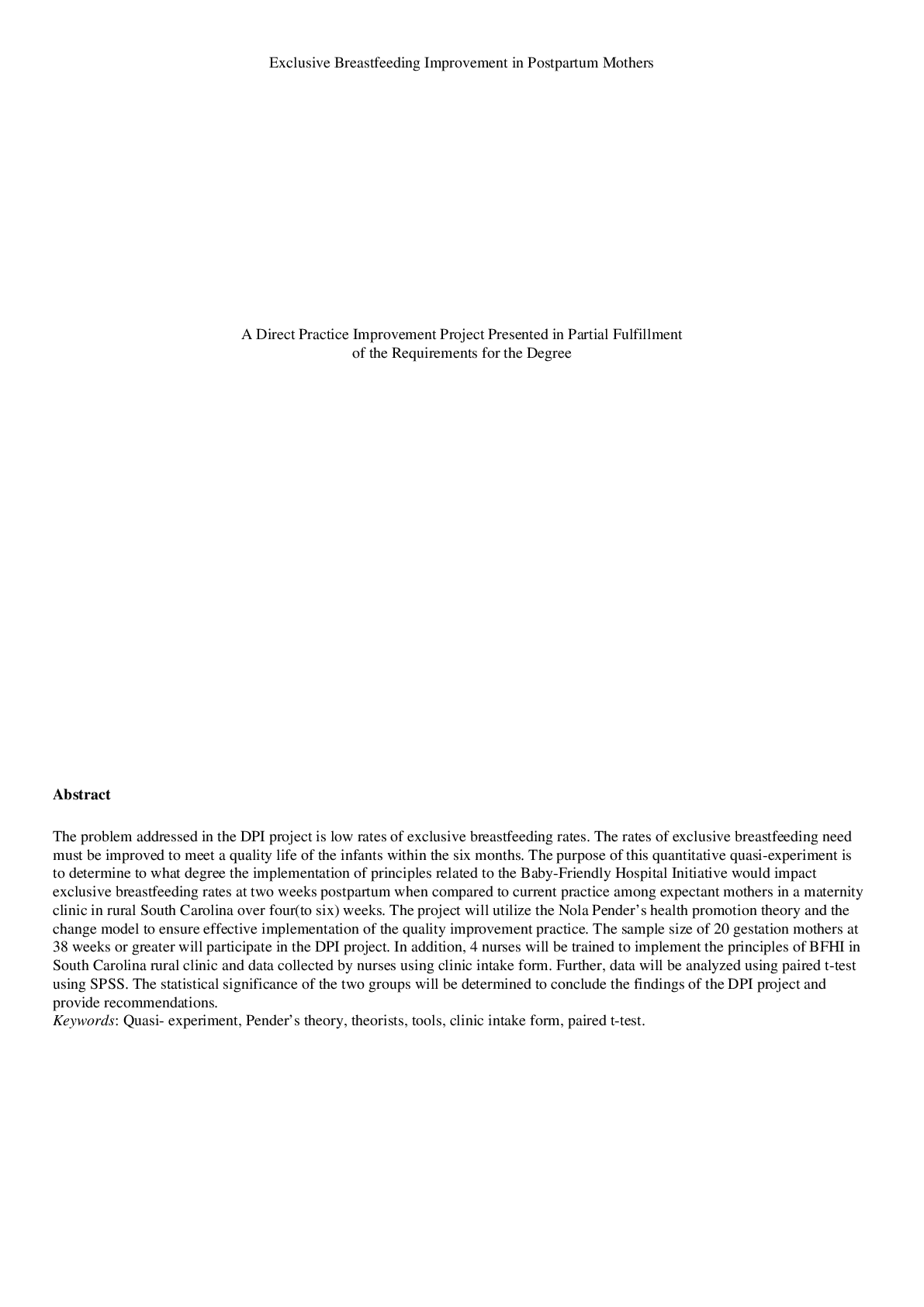
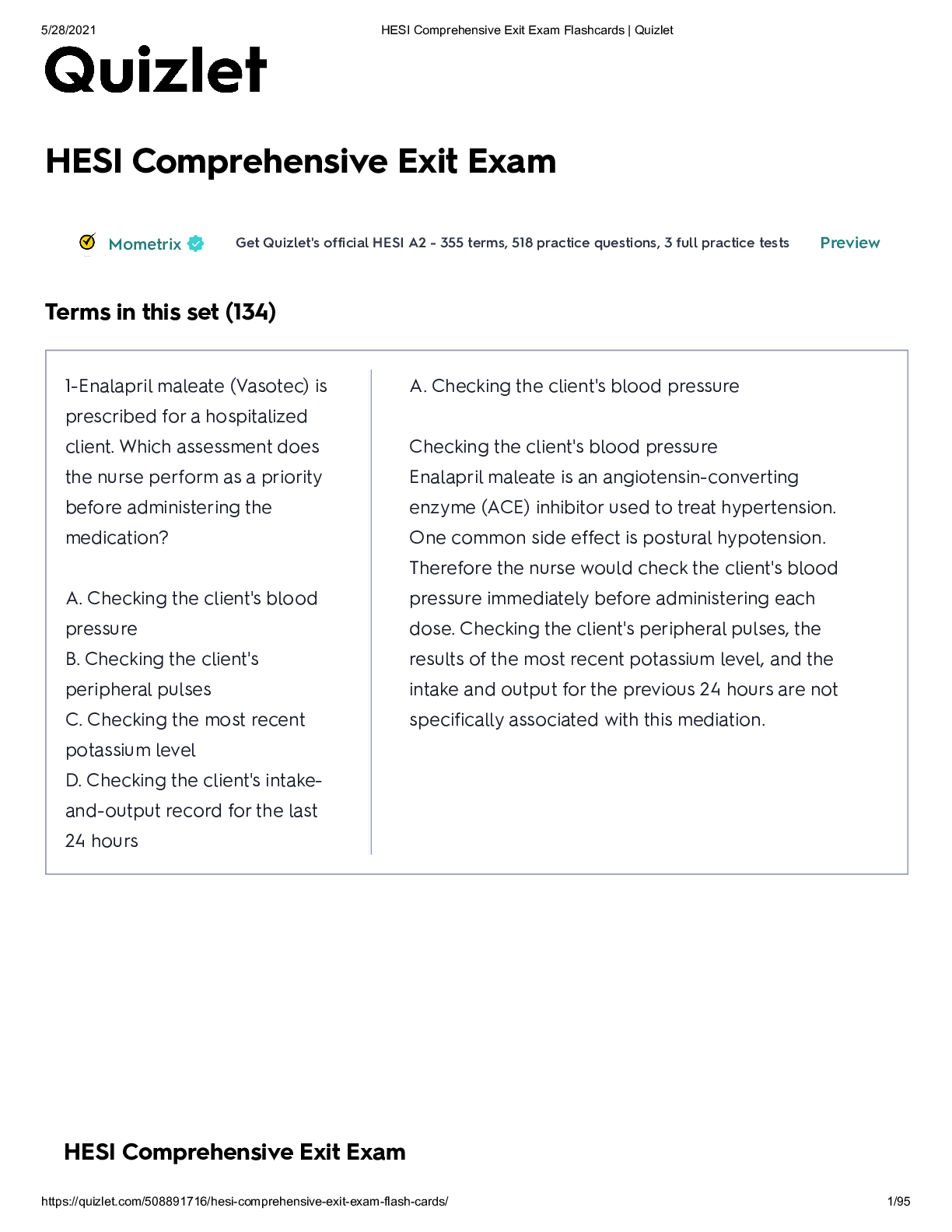

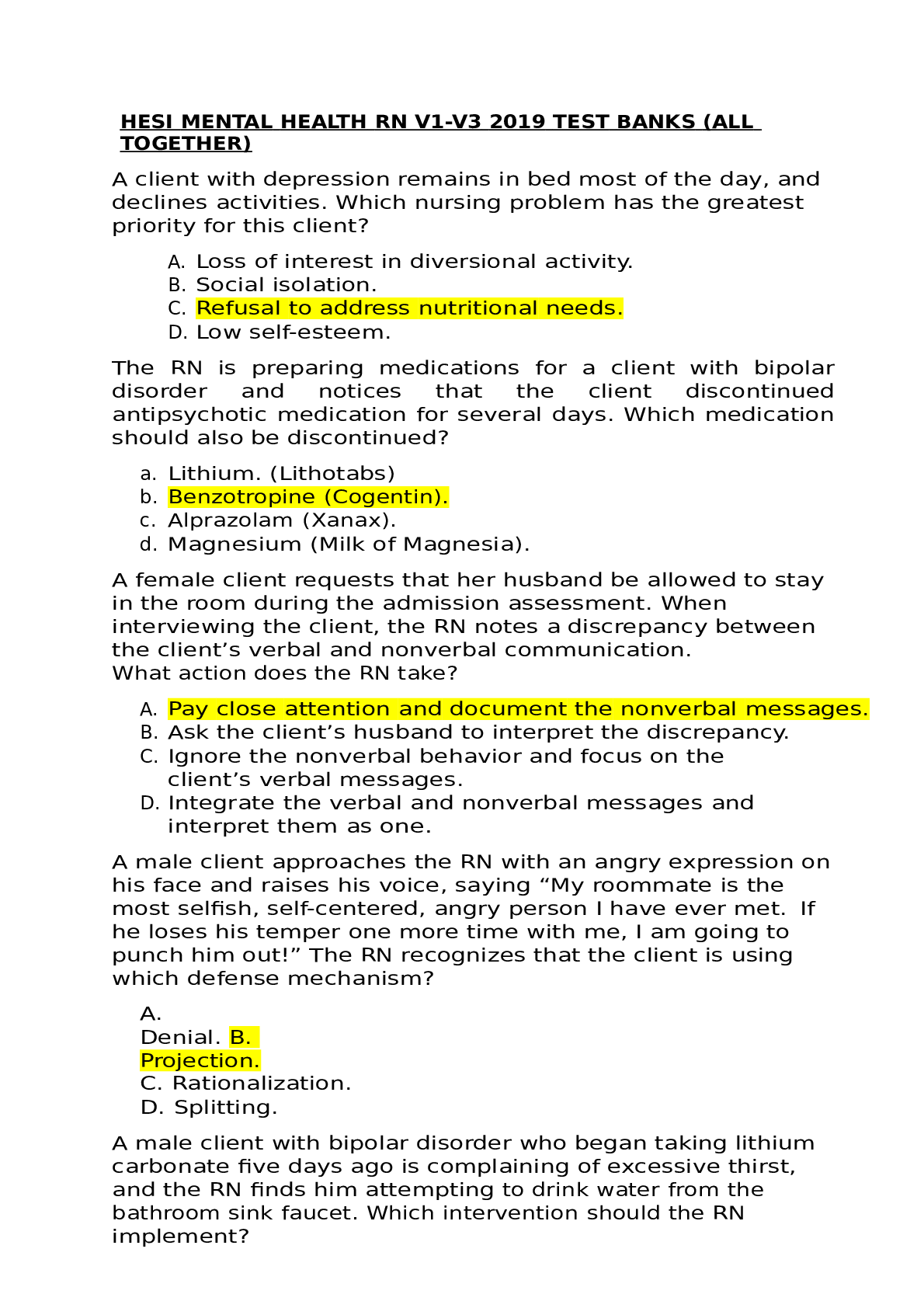
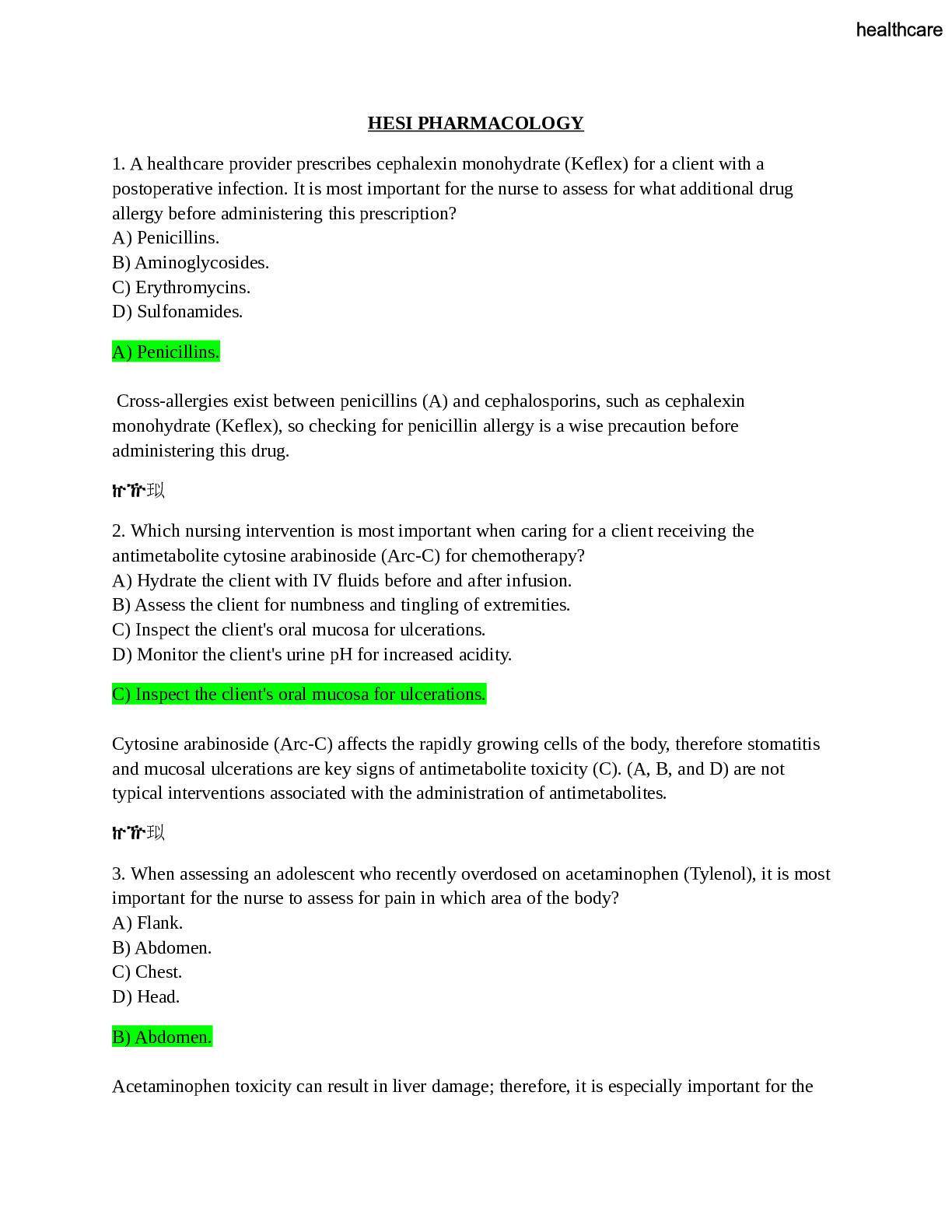

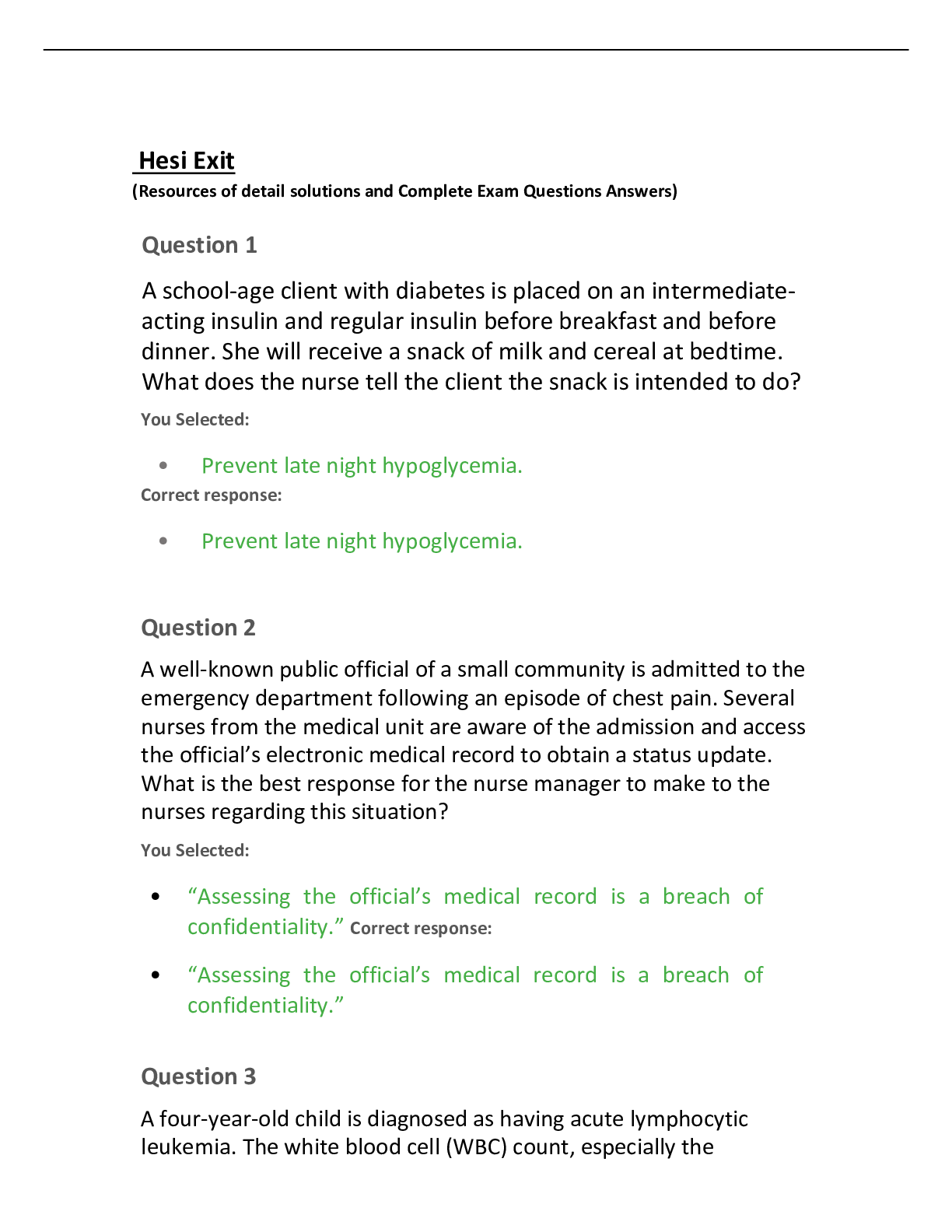
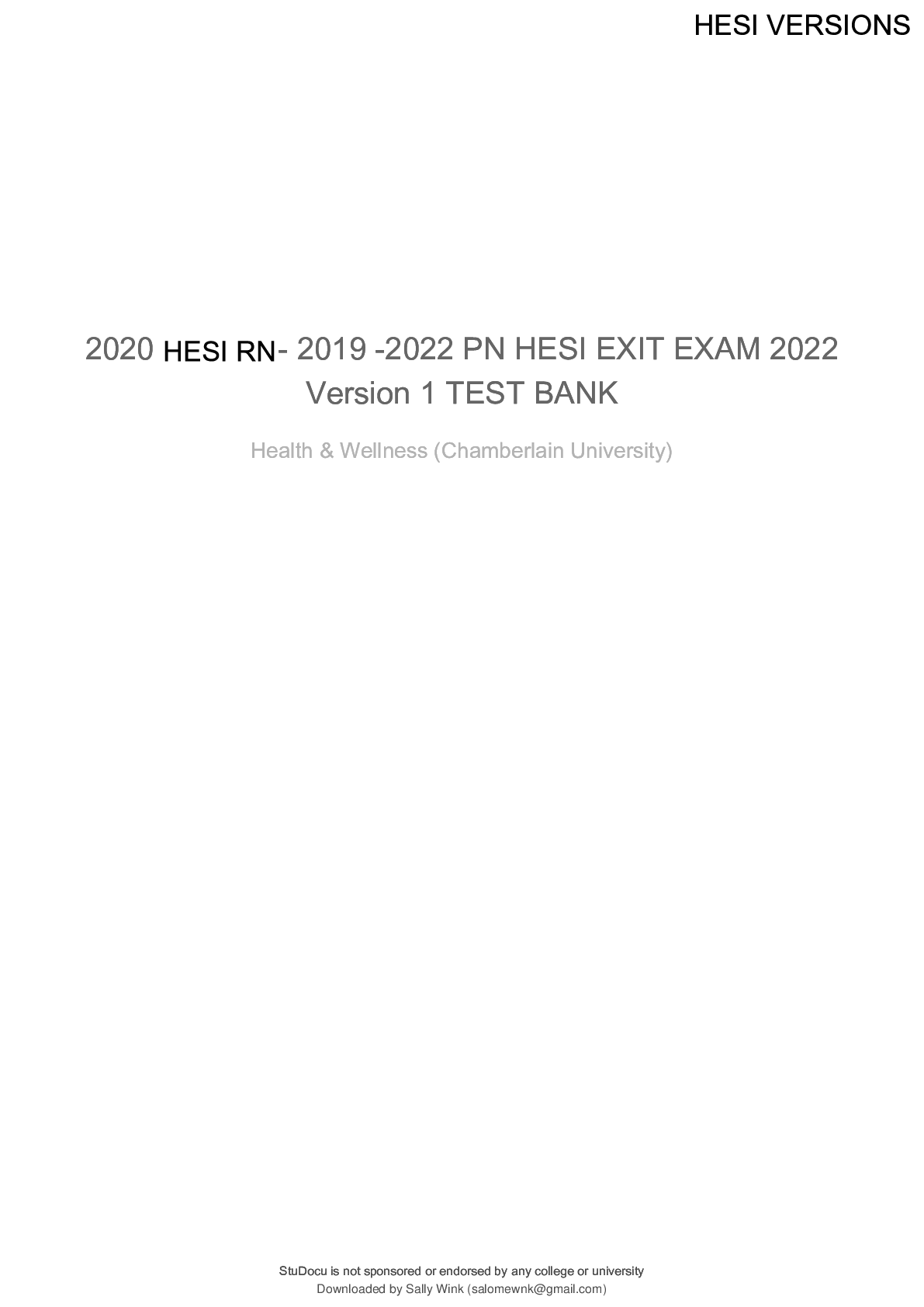

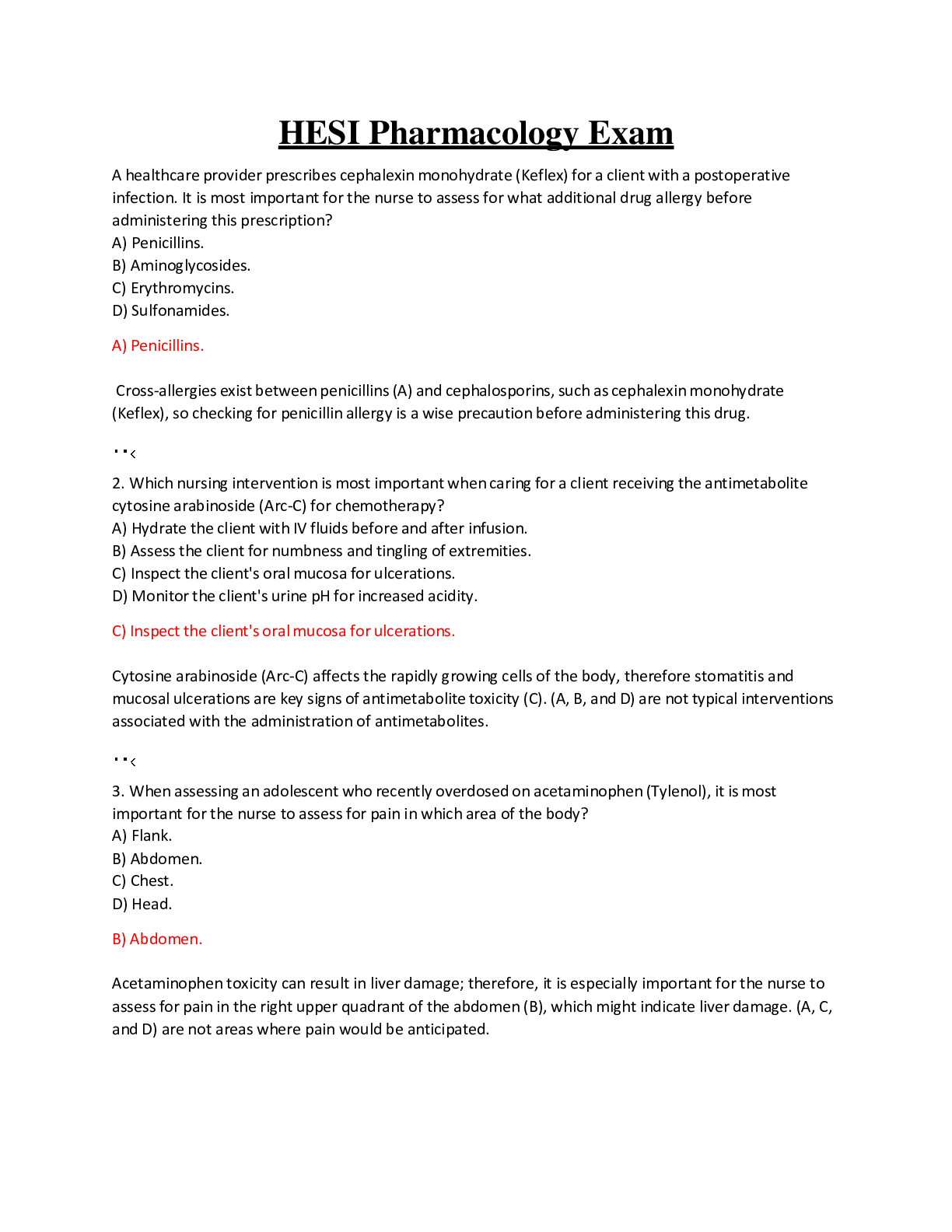
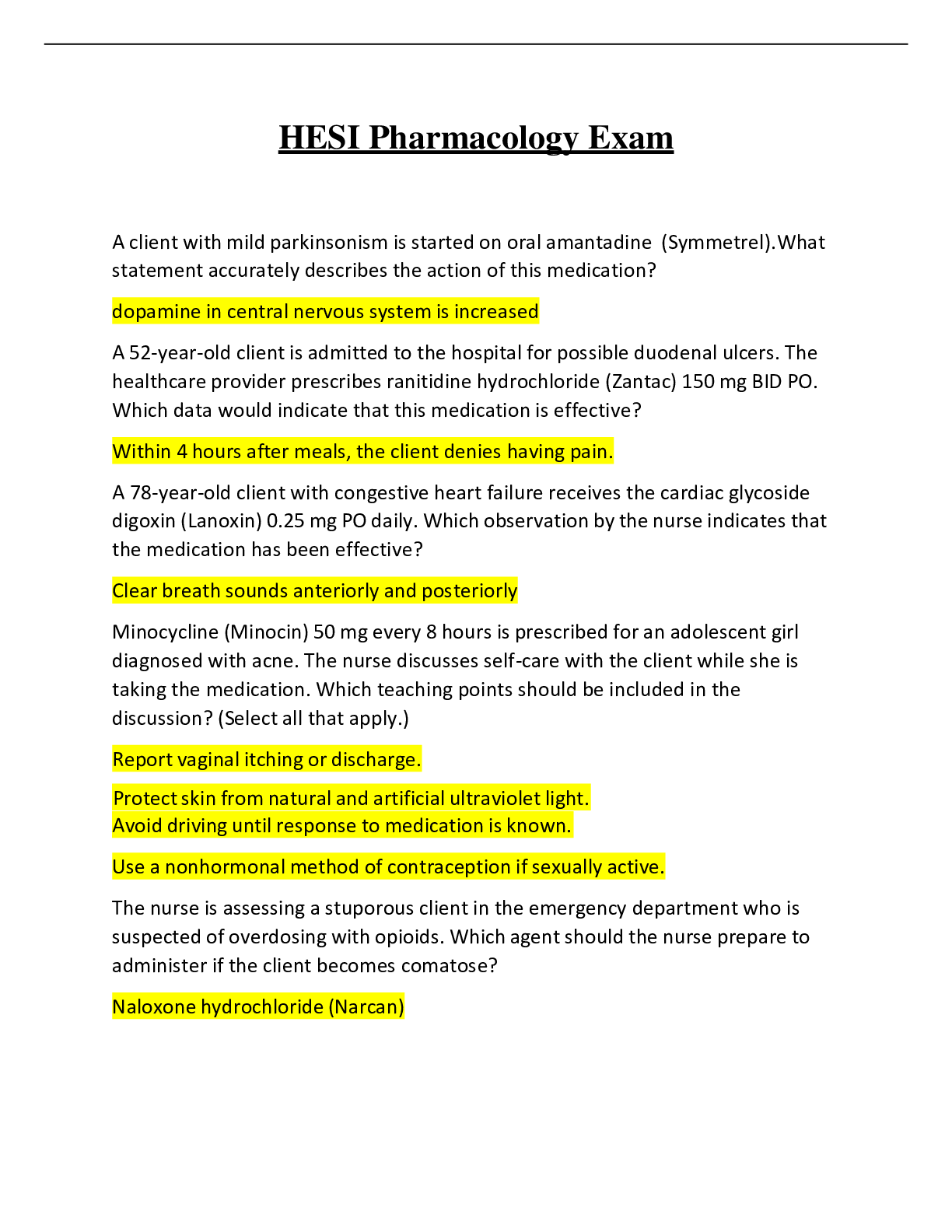

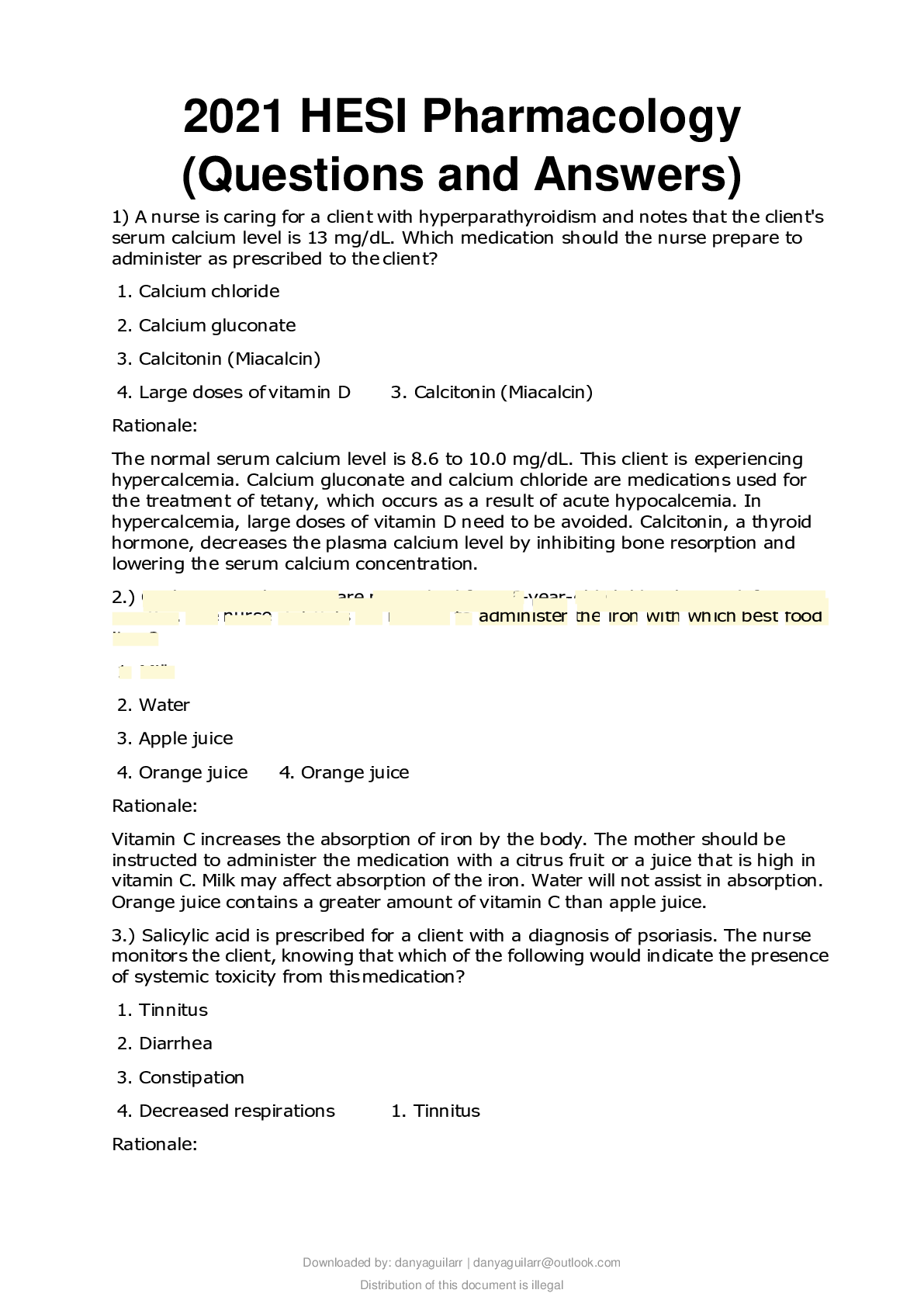
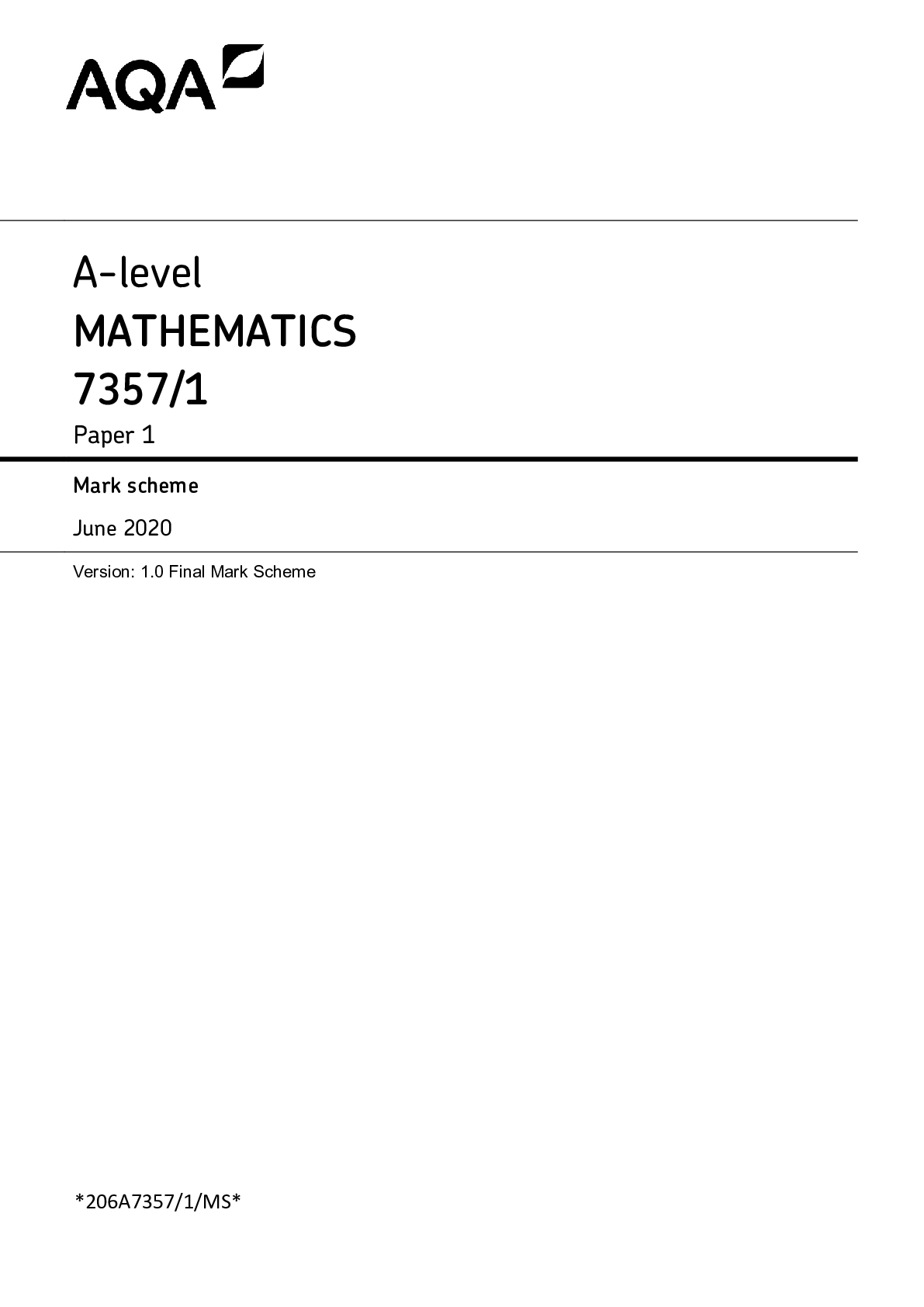
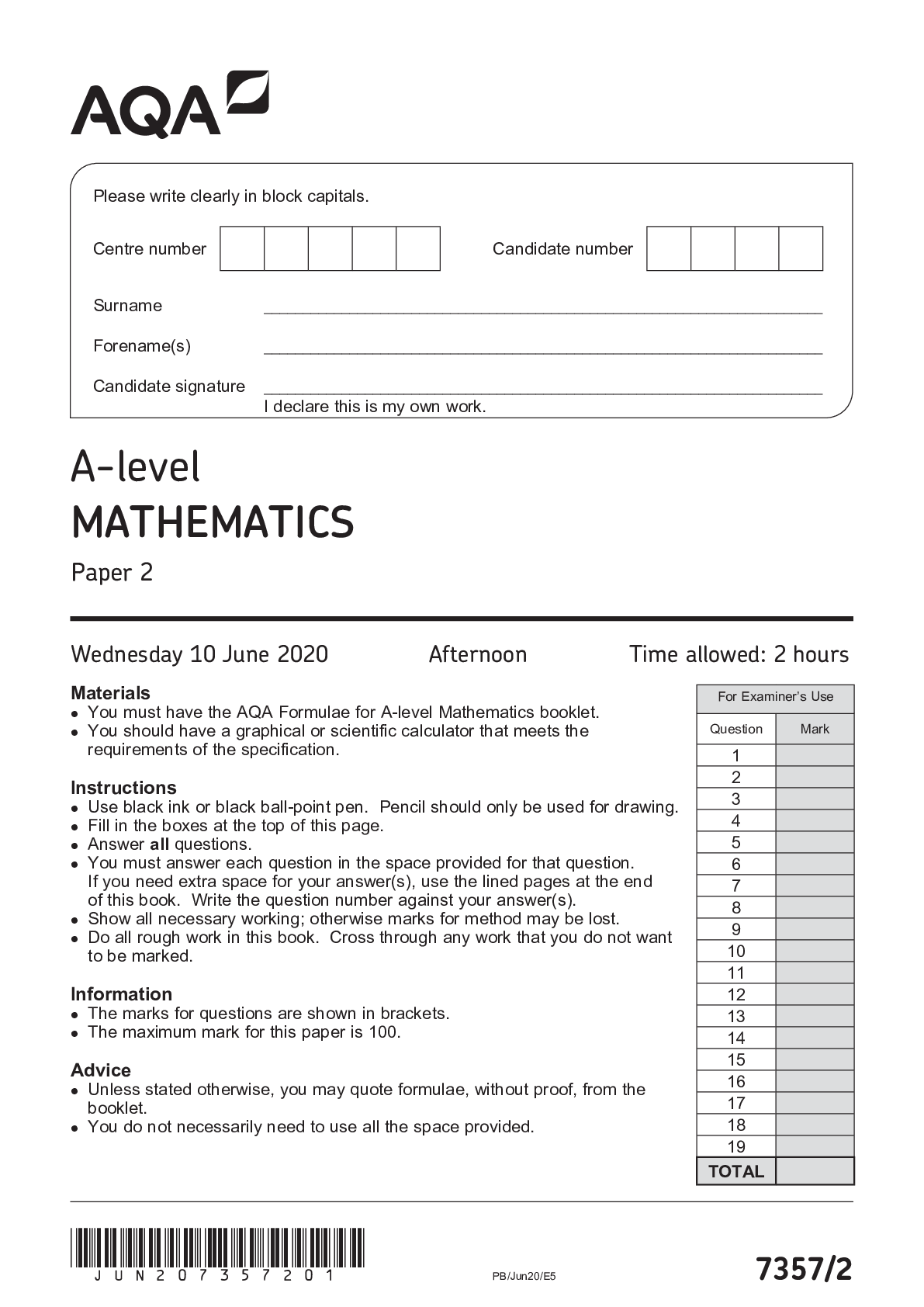


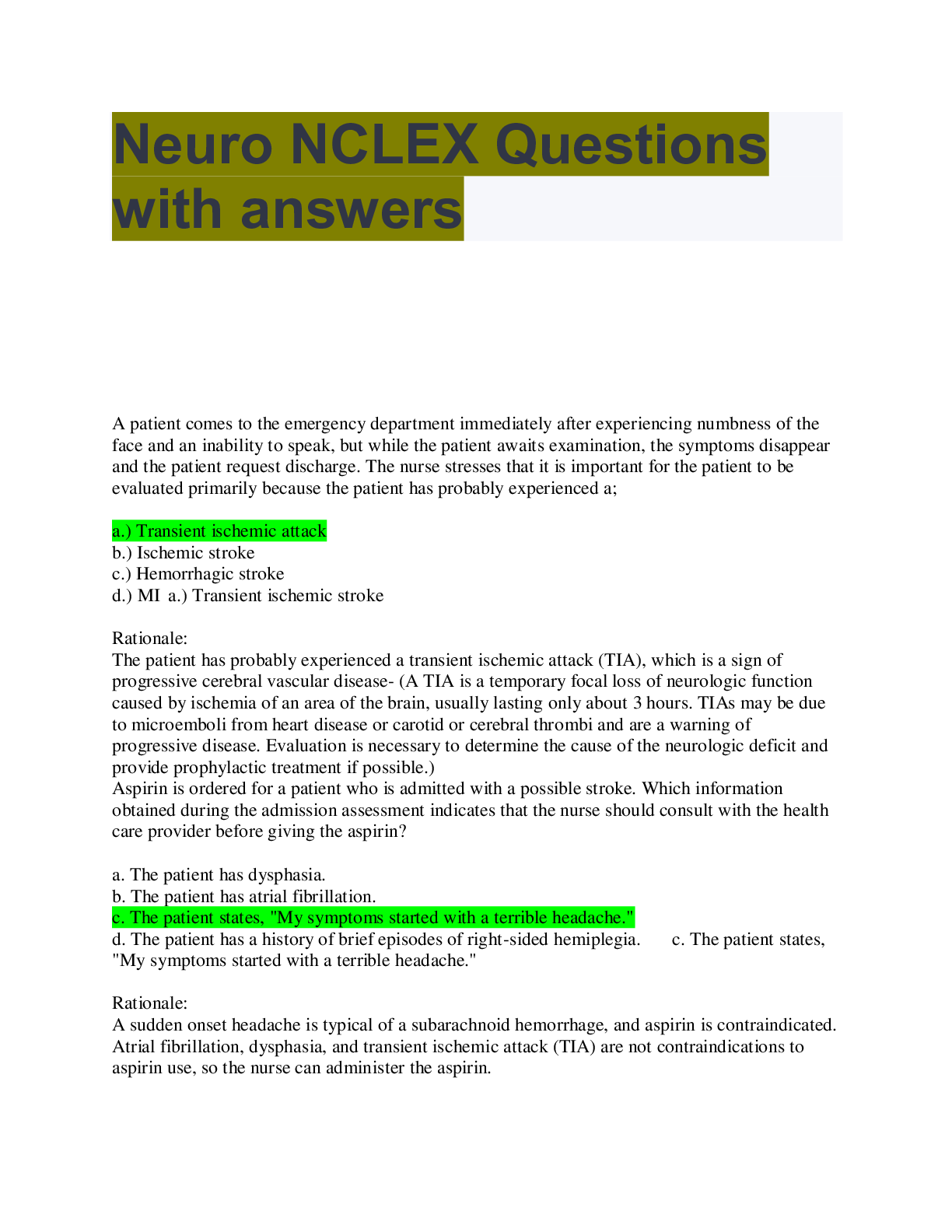
 (1).png)

.png)

